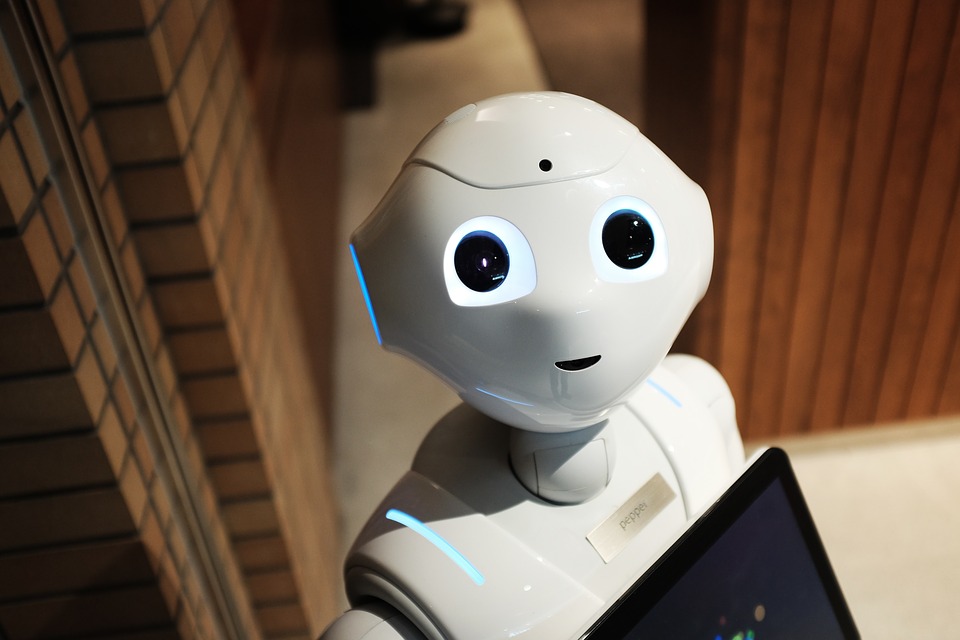Chatbot vs Conversational AI – Which is Right For Your Business?
Just a few decades ago, human-like talking robots were only the stuff of sci-fi movies. And now here we are, outfitting our homes with smart technology, inching toward driverless cars, and reading about the latest breakthroughs in artificial intelligence on a daily basis. It’s a wild, new frontier, to be sure.
But, AI isn’t only reserved for when you want to impress your house guests—if you’re not using AI for business, you’re missing out on a huge opportunity to improve your customer service efforts.
Chatbots and conversational AI are the latest must-have technology for every customer service department. So what’s the difference between the two? Here’s what you need to know about chatbot vs. conversational AI.
What Are Chatbots?
Chatbots are a type of software that can imitate conversation using a series of pre-set algorithms. Though the most archaic form of a chatbot was invented way back in 1966, modern chatbots have only become popular in the past decade. Companies like Google and Amazon use chatbots for live chat and AI assistants like Alexa and Google Assistant.
Chatbots can be used for audio or text purposes, and are built using if/then flowchart patterns. For example, if a person says or types, “What’s the weather today?” then the chatbot can be programmed to dictate the local weather report from weather.com.
Benefits of Chatbots
Chatbots are best known as the basis for the virtual assistants many people have in their homes today. But they’re also used for live chat and customer service phone lines. Though chatbots have many limitations, they do a good job of delivering canned responses based on customer input. They can decently mimic human conversation and save your agents time by resolving basic customer service inquiries.
Many companies use chatbots to kick off live chats. The chatbot can greet the customer and ask how they can help. Based on the customer response, the chatbot can deliver the necessary information, or refer them to a human agent. Sometimes the chatbot will be able to help the customer without the need for a human to get involved, which creates a more efficient workflow within your customer service department. And if a human does need to get involved, the chatbot can speed up the process by relaying important information they’ve already collected from the customer.
Limitations of Chatbots
As stated above, chatbots mainly serve the purpose of delivering canned responses based on if/then flowcharts. This means a chatbot cannot get smarter like other types of AI. They cannot improve their ability to understand context or nuance. In short, chatbots offer a very structured solution to customer service needs, and there isn’t much room for growth.
As of 2019, chatbots are not yet able to pass the Turing Test, which is a benchmark test invented by mathematician Alan Turing to test if a machine can exhibit intelligence equal to a human. Some experts predict that chatbots may be able to pass this test by 2029. To pass the test, chatbots will need to become much better at conversing in a human-like way.
What Is Conversational AI?
Conversational AI is a type of technology that can understand and respond to text or audio input in a natural, human-like way. Chatbots are one component of conversational AI, but this technology takes it a step further by also being able to learn from past conversations and improve responses over time.
To pull off this complicated process, conversational AI must first internalize the audio or text input, then decipher the meaning using natural language processing. Once the system understands the input, it will decide how to proceed and offer a response. The technology can comb through archived conversations to offer other solutions that may not directly relate to the original input.
Benefits of Conversational AI
Conversational AI design involves far more advanced processes in comparison to chatbots. This solution can understand the complexity of human interaction. It takes advantage of chat history and makes future interactions quicker and more accurate. Conversational AI can be used for more complex situations, such as financial transactions, processing claims, or troubleshooting technology problems.
As a real-time, natural language processor, conversational AI design goes beyond if/then workflows and handles much more complicated inquiries than a chatbot ever could. The technology is being used to build a more personalized customer service experience on a massive level. It can move across platforms to communicate with customers over text and audio alike.
Limitations of Conversational AI
While it’s true that conversational AI is a big step up from a basic chatbot, there are still limits to its abilities to mimic human behavior. The technology is not at a point of being completely autonomous, and many of the more complex conversational AI technologies have a delayed response that can be frustrating to some customers.
Many companies and their customers also have concerns about the security of conversational AI. If the technology is being used to collect private and sensitive data, companies should take great caution to set up agent guidelines and a strong cybersecurity network.
Still, conversational AI is improving all the time, and it is sure to have a bright future within the realm of customer service.
Snapshot: Chatbot vs. Conversational AI
If you’re looking for a simple tool to save your customer service agents some time, chatbots might be a good solution for you. But, if you want a grand-scale solution that can understand more complex and nuanced interaction, conversational AI should be your choice of technology to do the job. Here’s an up-close comparison of chatbots vs. conversational AI:
Chatbot Features:
- Can be used 24/7
- Best for navigating a customer to a specific destination
- Uses if/then statements to process information
Conversational AI Features:
- Can be used 24/7
- Best for complex conversations across multiple platforms
- Becomes smarter over time
- Uses natural language processing
Making a Decision
When you’re ready to decide between chatbots and conversational AI, make sure you do your homework and think about the needs of your business. The following questions will help you make a more informed choice:
- What are your main priorities/goals?
- What is your budget?
- Where will the tool be used?
- Who will be using the tool?
- Where does your customer service department need to improve?
- Who is your audience?
- Do you have the proper security measures in place?
- Who will train the team on how to use the technology?
Once you’ve answered these questions, you’ll have a better idea of what you’re looking for in this type of technology. Take time to shop around and compare options before you dive into using a particular software. Most companies will allow you to conduct a trial or at least get a thorough walk-through on how the technology works before you make a purchase. This is a big step for your company, so make sure you’re choosing the best fit!
Which One is Right for You?
Armed with a greater knowledge of the differences between chatbots and conversational AI, you can now decide which type is right for your business’s needs. No matter which type you choose, you’ll be taking a step forward by harnessing the power of modern technology to optimize your customer service efforts.






